-
 Bitcoin
Bitcoin $114200
0.00% -
 Ethereum
Ethereum $3637
0.56% -
 XRP
XRP $2.950
-2.01% -
 Tether USDt
Tether USDt $0.9999
0.02% -
 BNB
BNB $761.0
0.55% -
 Solana
Solana $164.1
-1.38% -
 USDC
USDC $0.9999
0.02% -
 TRON
TRON $0.3332
0.36% -
 Dogecoin
Dogecoin $0.2012
-0.52% -
 Cardano
Cardano $0.7261
-1.41% -
 Hyperliquid
Hyperliquid $37.62
-2.13% -
 Stellar
Stellar $0.3930
-2.65% -
 Sui
Sui $3.441
-0.16% -
 Bitcoin Cash
Bitcoin Cash $563.8
0.70% -
 Chainlink
Chainlink $16.50
0.09% -
 Hedera
Hedera $0.2424
-0.14% -
 Ethena USDe
Ethena USDe $1.001
0.01% -
 Avalanche
Avalanche $22.20
0.00% -
 Litecoin
Litecoin $118.0
-2.48% -
 UNUS SED LEO
UNUS SED LEO $8.991
0.12% -
 Toncoin
Toncoin $3.195
-3.87% -
 Shiba Inu
Shiba Inu $0.00001217
0.12% -
 Uniswap
Uniswap $9.674
-0.21% -
 Polkadot
Polkadot $3.633
1.00% -
 Monero
Monero $295.3
-0.82% -
 Dai
Dai $0.9999
0.00% -
 Bitget Token
Bitget Token $4.321
-0.41% -
 Cronos
Cronos $0.1392
0.73% -
 Pepe
Pepe $0.00001027
-0.89% -
 Aave
Aave $258.5
0.32%
How to read EMV's end-of-day changes? Do signals need special attention before closing?
EMV's end-of-day changes help traders assess market trends; special attention to signals before closing is crucial for informed decisions in cryptocurrency trading.
May 26, 2025 at 07:21 am
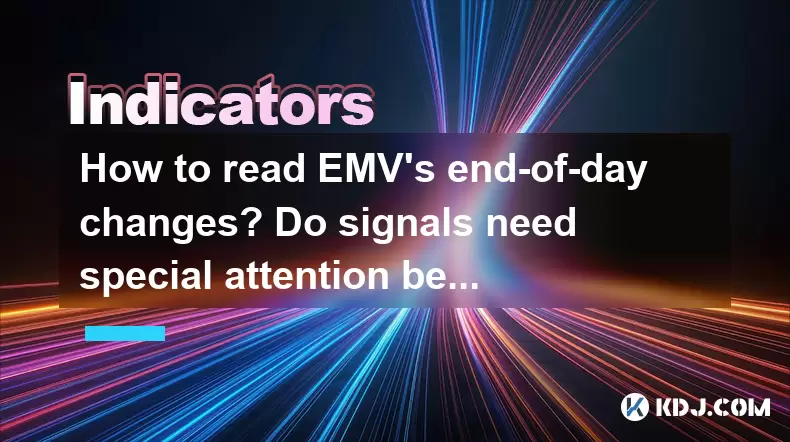
Understanding how to read EMV's end-of-day changes and whether signals require special attention before closing is crucial for traders and investors in the cryptocurrency market. EMV, or Ease of Movement, is a technical indicator that helps traders assess the relationship between price and volume. By analyzing EMV's end-of-day changes, traders can gain insights into market trends and make informed decisions. In this article, we will explore how to interpret EMV's end-of-day changes and discuss whether signals need special attention before closing.
What is the Ease of Movement (EMV) Indicator?
The Ease of Movement (EMV) indicator is designed to measure the ease with which prices move up or down. Developed by Richard W. Arms Jr., EMV is calculated by dividing the net price change by the trading volume. The formula for EMV is as follows:
[ \text{EMV} = \frac{\text{(High + Low) / 2 - (Prior High + Prior Low) / 2}}{\text{Volume / (High - Low)}} ]
This indicator helps traders identify potential shifts in market trends by highlighting periods of high or low ease of movement. A positive EMV value suggests that prices are moving upward with relative ease, while a negative value indicates downward movement with ease.
How to Read EMV's End-of-Day Changes
Reading EMV's end-of-day changes involves analyzing the daily values of the EMV indicator to understand market dynamics. Here are the steps to effectively interpret these changes:
Gather Daily EMV Data: Collect the end-of-day EMV values for the cryptocurrency you are tracking. Most trading platforms and financial data providers offer this information.
Identify Trends: Look for patterns in the EMV values over time. A consistent positive EMV may indicate a bullish trend, while a consistent negative EMV may suggest a bearish trend.
Analyze Volume and Price: Compare the EMV values with the trading volume and price movements. High EMV values with increasing volume and price suggest strong bullish momentum, whereas high negative EMV values with increasing volume and declining prices indicate strong bearish momentum.
Watch for Divergences: Pay attention to divergences between the EMV and the price. If the price is rising but the EMV is falling, it may signal weakening momentum and a potential reversal. Conversely, if the price is falling but the EMV is rising, it may indicate a potential bullish reversal.
Set Thresholds: Establish thresholds for significant EMV changes. For example, if the EMV moves above a certain positive value or below a certain negative value, it may trigger a buy or sell signal.
Do Signals Need Special Attention Before Closing?
When it comes to signals, special attention before closing is often necessary to ensure informed trading decisions. Here are some key considerations:
Confirm Signals with Other Indicators: Before acting on an EMV signal, confirm it with other technical indicators such as the Relative Strength Index (RSI), Moving Averages, or the Moving Average Convergence Divergence (MACD). This helps reduce false signals and increases the reliability of your trading decisions.
Check Market Conditions: Assess the overall market conditions before closing a trade based on an EMV signal. Factors such as market volatility, news events, and overall sentiment can impact the effectiveness of the signal.
Evaluate Position Size: Consider the size of your position and its potential impact on your portfolio. If a signal suggests closing a significant position, ensure that it aligns with your risk management strategy.
Monitor Time Frames: Analyze the EMV signal across different time frames. A signal that appears strong on a daily chart may not be as compelling on a weekly or monthly chart. Ensure consistency across various time frames before acting on the signal.
Practical Example of Reading EMV's End-of-Day Changes
Let's walk through a practical example of how to read EMV's end-of-day changes and determine if a signal requires special attention before closing.
Step 1: Collect Data: Gather the end-of-day EMV values for Bitcoin (BTC) over the past month. You can use a trading platform like TradingView or a financial data provider like Yahoo Finance.
Step 2: Analyze Trends: Plot the EMV values on a chart and look for trends. Suppose you notice that the EMV has been consistently positive over the past two weeks, indicating a bullish trend.
Step 3: Compare with Price and Volume: Cross-reference the EMV values with Bitcoin's price and trading volume. If you observe that the price and volume are also increasing during this period, it reinforces the bullish signal.
Step 4: Check for Divergences: Examine the chart for any divergences. If the price continues to rise but the EMV starts to decline, it might suggest weakening momentum and a potential reversal.
Step 5: Set Thresholds: Determine your EMV thresholds. For instance, if the EMV moves above +0.001, it could be a strong buy signal, and if it falls below -0.001, it could be a strong sell signal.
Step 6: Confirm with Other Indicators: Before acting on the EMV signal, check other indicators like the RSI and MACD. If they also indicate a bullish trend, the signal is more reliable.
Step 7: Assess Market Conditions: Evaluate the current market conditions. If there are no major news events or high volatility, the signal might be more trustworthy.
Step 8: Evaluate Position Size: Consider the size of your Bitcoin position. If it's a significant portion of your portfolio, ensure that closing it aligns with your risk management strategy.
Step 9: Monitor Time Frames: Look at the EMV signal across different time frames. If the bullish signal is consistent across daily, weekly, and monthly charts, it strengthens the case for closing the trade.
Using EMV Signals in Trading Strategies
Incorporating EMV signals into trading strategies can enhance decision-making and improve trading outcomes. Here's how traders can effectively use EMV signals:
Trend Following: Use EMV to identify and follow trends. When the EMV is consistently positive, consider holding or entering long positions. When the EMV is consistently negative, consider holding or entering short positions.
Reversal Identification: Look for divergences between the EMV and price to identify potential reversals. If the price is rising but the EMV is falling, it may be a signal to close long positions or enter short positions.
Breakout Confirmation: Use EMV to confirm breakouts. If the price breaks above resistance with a high positive EMV, it may confirm a bullish breakout. Conversely, if the price breaks below support with a high negative EMV, it may confirm a bearish breakout.
Risk Management: Incorporate EMV signals into your risk management strategy. For example, set stop-loss orders based on EMV thresholds to limit potential losses.
Common Mistakes to Avoid When Reading EMV Signals
While EMV can be a powerful tool, traders should be aware of common mistakes that can lead to misinterpretation of signals:
Ignoring Volume: Failing to consider trading volume alongside EMV values can lead to false signals. Always analyze EMV in conjunction with volume.
Overlooking Divergences: Ignoring divergences between EMV and price can result in missed opportunities or premature trade closures. Always look for divergences to refine your trading strategy.
Relying Solely on EMV: Depending solely on EMV without confirming signals with other indicators can increase the risk of false signals. Always use EMV in combination with other technical analysis tools.
Not Adjusting for Market Conditions: Failing to adjust EMV signals based on current market conditions can lead to poor trading decisions. Always assess the broader market context before acting on an EMV signal.
Frequently Asked Questions
Q1: Can EMV be used for short-term trading?
Yes, EMV can be used for short-term trading. By analyzing intraday EMV values and setting appropriate thresholds, traders can identify short-term trends and potential reversals. However, it's essential to confirm EMV signals with other indicators and consider market conditions to improve the reliability of short-term trades.
Q2: How does EMV differ from other volume-based indicators?
EMV differs from other volume-based indicators like the On-Balance Volume (OBV) and Volume-Weighted Average Price (VWAP) in its calculation and interpretation. While OBV focuses on the cumulative volume based on price direction, and VWAP calculates the average price weighted by volume, EMV measures the ease of price movement relative to volume. EMV provides a unique perspective on market dynamics by highlighting periods of high or low ease of movement.
Q3: Is EMV suitable for all types of cryptocurrencies?
EMV can be applied to all types of cryptocurrencies, but its effectiveness may vary depending on the liquidity and trading volume of the specific cryptocurrency. For highly liquid cryptocurrencies like Bitcoin and Ethereum, EMV signals are generally more reliable. For less liquid cryptocurrencies, EMV signals may be less consistent due to lower trading volumes and higher volatility.
Q4: How can I backtest EMV signals for historical accuracy?
To backtest EMV signals, follow these steps:
Collect Historical Data: Gather historical price and volume data for the cryptocurrency you want to analyze.
Calculate EMV: Use the EMV formula to calculate historical EMV values.
Set Signal Thresholds: Define your buy and sell signal thresholds based on historical EMV values.
Simulate Trades: Simulate trades based on the EMV signals and track the performance of these trades over the historical period.
Analyze Results: Evaluate the accuracy and profitability of the EMV signals by comparing the simulated trades to actual market performance.
By following these steps, you can assess the historical accuracy of EMV signals and refine your trading strategy accordingly.
Disclaimer:info@kdj.com
The information provided is not trading advice. kdj.com does not assume any responsibility for any investments made based on the information provided in this article. Cryptocurrencies are highly volatile and it is highly recommended that you invest with caution after thorough research!
If you believe that the content used on this website infringes your copyright, please contact us immediately (info@kdj.com) and we will delete it promptly.
- Brazil, Bitcoin, Hearing Date: Is Brazil About to Embrace Bitcoin?
- 2025-08-06 20:30:38
- Stabull DEX on Base Chain: A New Era for Stablecoins?
- 2025-08-06 20:47:53
- WeWake Finance: Is This the Crypto ROI Opportunity You've Been Waiting For?
- 2025-08-06 21:10:18
- PancakeSwap, US Stocks, and Perpetual Contracts: A New Frontier in DeFi
- 2025-08-06 21:10:18
- South Korea, Stablecoins, and Online Banks: KakaoBank's Bold Move
- 2025-08-06 20:47:53
- PROVE the Future: Price Predictions & Succinct's ZK Revolution (2025-2030)
- 2025-08-06 20:30:38
Related knowledge
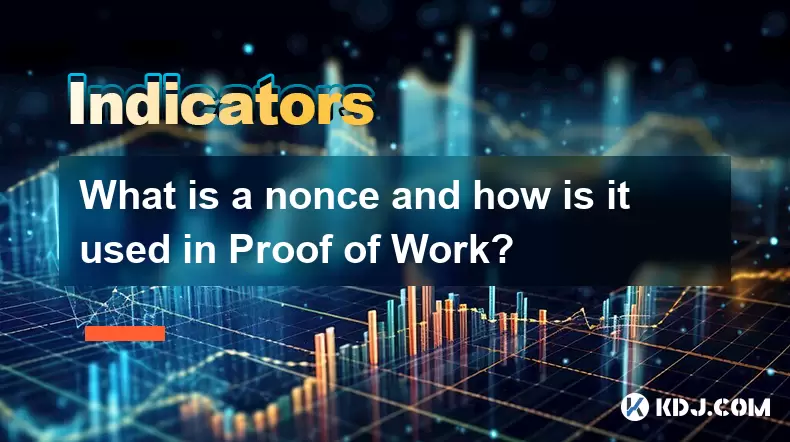
What is a nonce and how is it used in Proof of Work?
Aug 04,2025 at 11:50pm
Understanding the Concept of a Nonce in CryptographyA nonce is a number used only once in cryptographic communication. The term 'nonce' is derived fro...
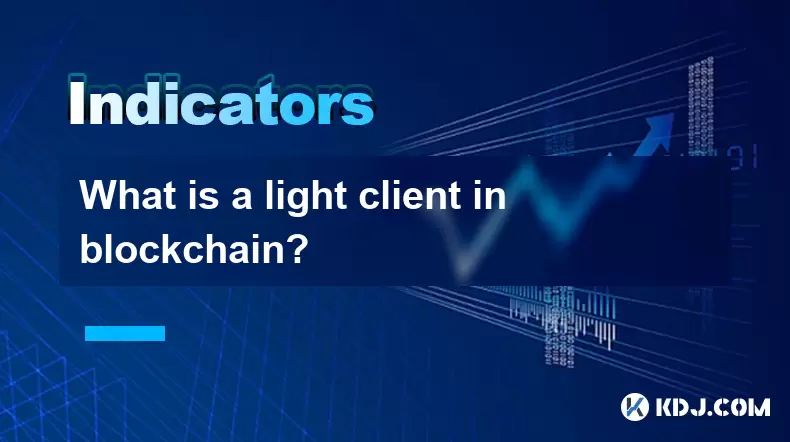
What is a light client in blockchain?
Aug 03,2025 at 10:21am
Understanding the Role of a Light Client in Blockchain NetworksA light client in blockchain refers to a type of node that interacts with the blockchai...
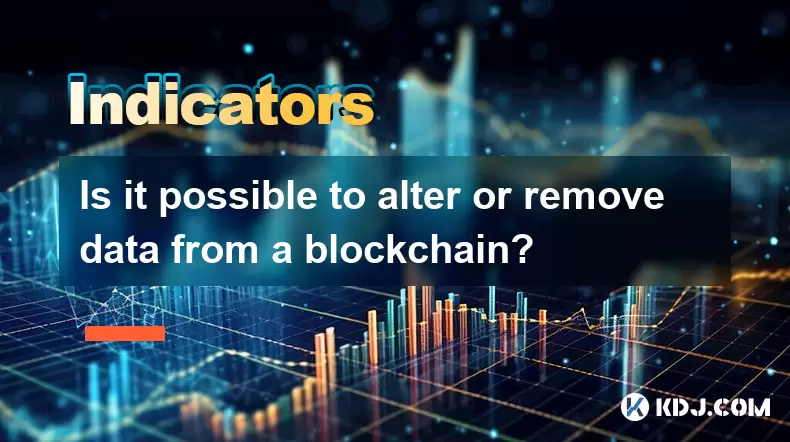
Is it possible to alter or remove data from a blockchain?
Aug 02,2025 at 03:42pm
Understanding the Immutable Nature of BlockchainBlockchain technology is fundamentally designed to ensure data integrity and transparency through its ...
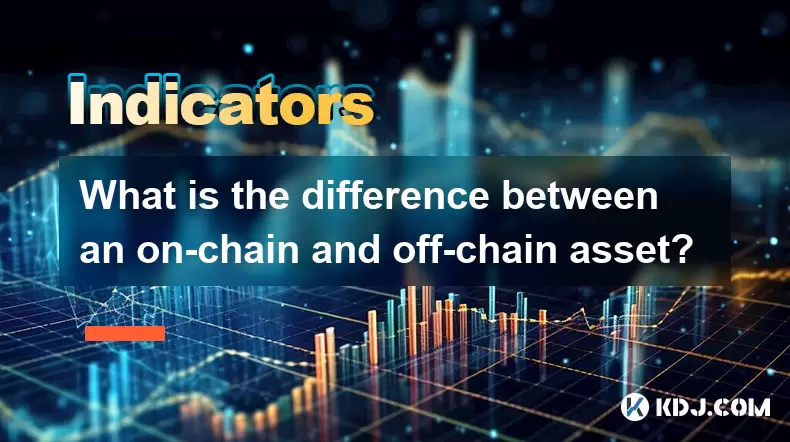
What is the difference between an on-chain and off-chain asset?
Aug 06,2025 at 01:42am
Understanding On-Chain AssetsOn-chain assets are digital assets that exist directly on a blockchain network. These assets are recorded, verified, and ...
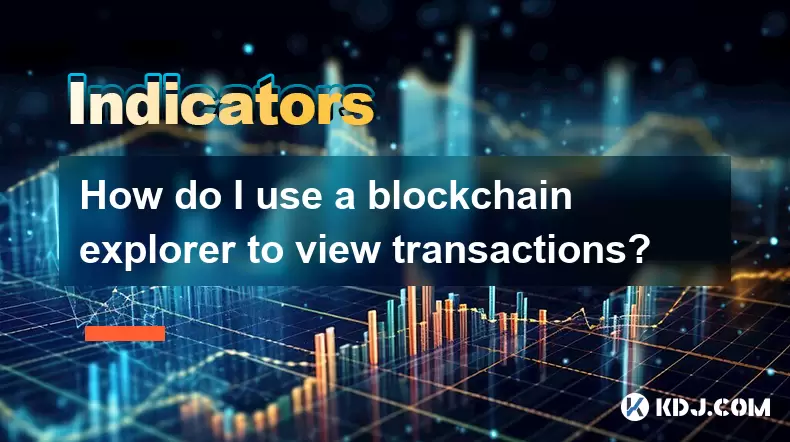
How do I use a blockchain explorer to view transactions?
Aug 02,2025 at 10:01pm
Understanding What a Blockchain Explorer IsA blockchain explorer is a web-based tool that allows users to view all transactions recorded on a blockcha...
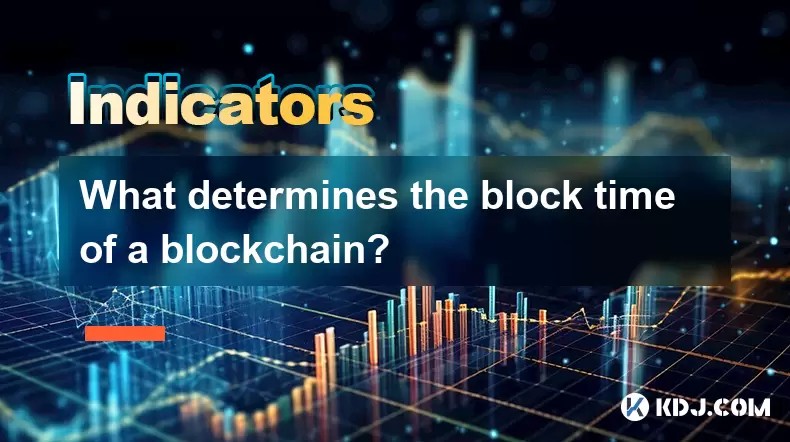
What determines the block time of a blockchain?
Aug 03,2025 at 07:01pm
Understanding Block Time in Blockchain NetworksBlock time refers to the average duration it takes for a new block to be added to a blockchain. This in...

What is a nonce and how is it used in Proof of Work?
Aug 04,2025 at 11:50pm
Understanding the Concept of a Nonce in CryptographyA nonce is a number used only once in cryptographic communication. The term 'nonce' is derived fro...

What is a light client in blockchain?
Aug 03,2025 at 10:21am
Understanding the Role of a Light Client in Blockchain NetworksA light client in blockchain refers to a type of node that interacts with the blockchai...

Is it possible to alter or remove data from a blockchain?
Aug 02,2025 at 03:42pm
Understanding the Immutable Nature of BlockchainBlockchain technology is fundamentally designed to ensure data integrity and transparency through its ...

What is the difference between an on-chain and off-chain asset?
Aug 06,2025 at 01:42am
Understanding On-Chain AssetsOn-chain assets are digital assets that exist directly on a blockchain network. These assets are recorded, verified, and ...

How do I use a blockchain explorer to view transactions?
Aug 02,2025 at 10:01pm
Understanding What a Blockchain Explorer IsA blockchain explorer is a web-based tool that allows users to view all transactions recorded on a blockcha...

What determines the block time of a blockchain?
Aug 03,2025 at 07:01pm
Understanding Block Time in Blockchain NetworksBlock time refers to the average duration it takes for a new block to be added to a blockchain. This in...
See all articles

























































































